Top 10 Things To Know About Buddha
Buddha, renowned as Siddhartha Gautama, is the pivotal figure of Buddhism, an ancient spiritual tradition with roots in India. Through his teachings, which ... read more...embrace profound wisdom, boundless compassion, and unwavering mindfulness, countless individuals have found direction on the journey to enlightenment. Below is a compilation highlighting the ten things to know about Buddha.
-
Who was the Buddha?
Siddhartha Gautama, the historical Buddha, resided approximately 2,600 years ago within the present-day territories of northern India and Nepal. Born into the esteemed Shakya warrior clan, he is frequently called Shakyamuni, signifying the "Sage of the Shakyas."
Siddhartha's existence underwent a profound shift when, at 29 years old, he departed the palace and was confronted by the "Four Sights": an aged individual, an ailing person, a lifeless body, and an ascetic monk. Stirred by the suffering these encounters unveiled, Siddhartha relinquished his opulent lifestyle, bidding farewell to his wife and infant son to embrace the life of a wandering ascetic. In pursuit of enlightenment, he embarked on a transformative journey to fathom the intricacies of human suffering and unlock the path to liberation.
Following an unwavering spiritual dedication spanning six years, Siddhartha achieved enlightenment at age 35. This pivotal moment occurred as he meditated beneath the sheltering embrace of a Bodhi tree in Bodh Gaya, India. During this experience, he gained profound insights into the essence of suffering, its origins, and the transformative path to rise above its grip.
The teachings of Buddha have left an indelible mark on the realms of spiritual, philosophical, and ethical contemplation, resonating not solely across Asia but reverberating globally. Over time, Buddhism has diversified into various traditions and schools, each distinctively interpreting his profound teachings uniquely.
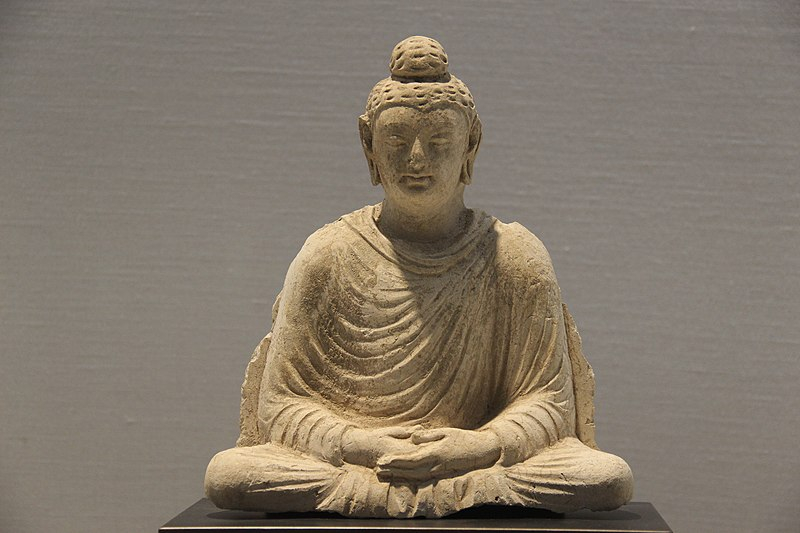
Photo on Wikimedia Commons (https://commons.wikimedia.org/wiki/File:Seated_Buddha_from_India.jpg) Video by ReligionForBreakfast -
How did the Buddha become enlightened?
The state of Enlightenment, known as "Bodhi" in Sanskrit, is a pivotal juncture in the life of Siddhartha Gautama, the historical Buddha. This profound attainment not only encapsulates the core of Buddhist teachings but also provides a transformative pathway for individuals to surpass suffering and attain Enlightenment.
With years of devoted spiritual inquiry, he fueled Siddhartha's relentless quest to unveil the verity behind human suffering and the route to emancipation. He aspired to rupture the cycle of birth, death, and rebirth. Beneath the shade of the Bodhi tree in Bodh Gaya, India, Siddhartha assumed his meditative posture, pledging not to abandon his seat until Enlightenment was attained and the profound inquiries of his heart were resolved.
Amidst his meditation, Siddhartha encountered many internal conflicts and external trials, presented by Mara – the embodiment of allure and illusion. With unswerving resolve, he tenaciously surmounted these tests. The illumination of Siddhartha's Enlightenment transpired across three watches of the night. During the initial watch, he learned to recollect his past lives. In the second, he cultivated a profound comprehension of the law of karma and the perpetual cycle of birth and demise. In the third, he achieved the realization of the Four Noble Truths.
The state of Enlightenment not only signaled the apex of Siddhartha's spiritual odyssey but also erected the cornerstone of the Buddhist tradition. It radiated as a guiding light of optimism for innumerable beings on their quest for liberation from suffering.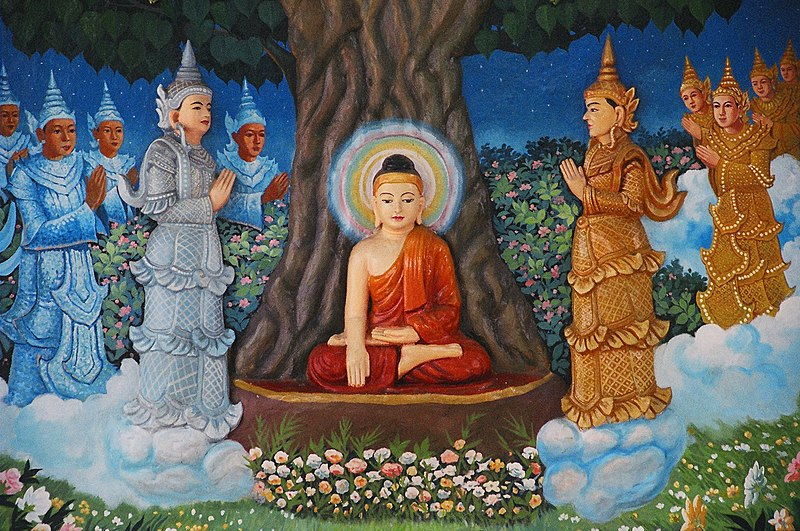
Photo on Wikimedia Commons (https://commons.wikimedia.org/wiki/File:The_Buddha%C2%B4s_Enlightenment_%28Burmese_depiction%29_%2830284239436%29.jpg) Video by TrueTube -
Was the Buddha a god?
In a well-known tale from ancient Buddhist texts, a man once asked the Buddha whether he was a deity. The Buddha's response was clear: "No." The questioner persisted, asking, "Then what are you?" The Buddha's reply was profound: "I am awake."
This story underscores that the Buddha, unlike traditional deities, did not claim divine status. In Buddhism, he is revered as an exceptional human who achieved enlightenment through his endeavors and profound understanding. He is commonly acknowledged as the "Enlightened One" or the "Awakened One."
Although the Buddha is not worshipped as a deity, reverence is expressed towards his image, relics, and teachings. Practitioners demonstrate their awe and appreciation by making offerings and paying respects, acknowledging his profound guidance and the transformative impact of his teachings.
In essence, the Buddha is esteemed as an extraordinary individual who unveiled the path to enlightenment through his personal endeavors and profound insight. His teachings serve as the bedrock of Buddhism, highlighting the inherent capacity for all beings to emulate his path and achieve awakening. The enduring legacy of the Buddha resonates across generations, influencing the lives of countless individuals as they embark on their unique quests for spiritual exploration and inner transformation.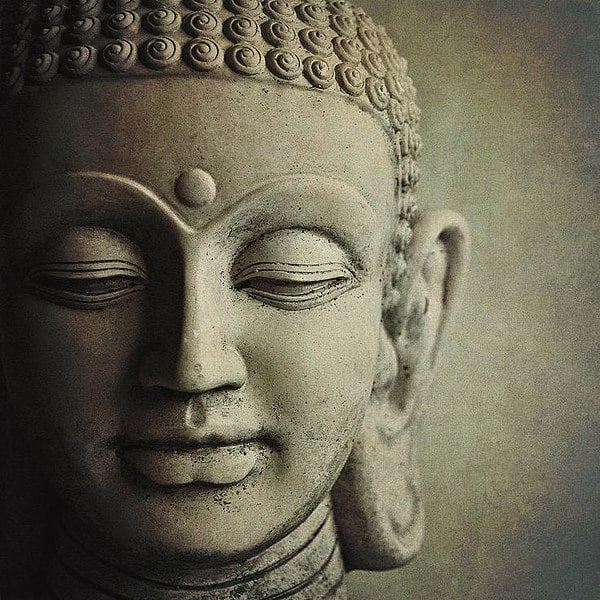
Photo on Wikimedia Commons (https://commons.wikimedia.org/wiki/File:Buddhism_with_Lord_Buddha.jpg) Video by Words of Wisdom -
Who were the Buddha’s first disciples?
The Buddha’s first disciples, recognized as the "Arahants" or "Elders," played a crucial role in disseminating his teachings. Upon enlightenment, the Buddha reached out to his former companions, who shared his ascetic journey. Five gathered at the Deer Park in Sarnath, where the Buddha expounded his inaugural sermon, the Dhammacakkappavattana Sutta. This pivotal event marked the official establishment of the Sangha.
The initial quintet of the Buddha's disciples frequently denoted as the "Pañcavaggiya" or "Five Ascetics," comprised Kondanna, Vappa, Bhaddiya, Mahanama, and Assaji. In response to the Buddha's discourse, Kondanna achieved the initial glimmer of enlightenment, emerging as the very first monk to be ordained by the Buddha.
While the Buddha persisted in his teachings and journeys, an increasing number of individuals embraced the monastic fold. The Buddha's circle of disciples expanded to encompass his kin, companions, and even those from diverse social strata. Notable among them was Ananda, who eventually assumed the role of the Buddha's attendant, and Upali, originating from a humbler caste background.
The Buddha’s first disciples propagated his teachings across the expanse of ancient India. Venturing into various regions, they diffused the Dharma and laid the foundation for monastic communities. This dedicated effort played a substantial role in fostering the expansion and development of Buddhism.
The Buddha’s first disciples held a pivotal position in laying the bedrock of the Buddhist tradition and safeguarding the infinity of his teachings. Their unwavering commitment, profound understanding, and zealous dissemination actively molded the trajectory of Buddhism's historical journey and its profound influence on the global stage.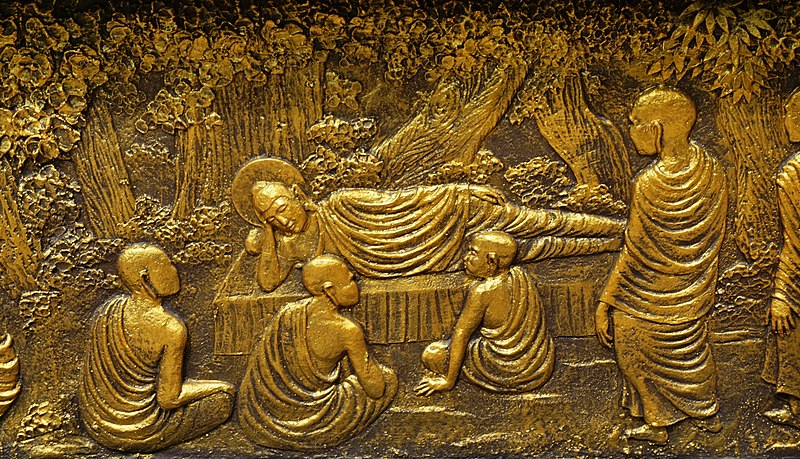
Photo on Wikimedia Commons (https://commons.wikimedia.org/wiki/File:042_Buddha_and_Disciples_%2839570511515%29.jpg) Video by True Little Monk -
What was the Buddha’s world like during his teaching years?
During the Buddha's teaching years, his environment was marked by deep spiritual exploration, a mosaic of social diversity, and a genuine atmosphere of intellectual inquiry. His teachings, disrupting conventional societal norms and hierarchies, championed the notion of spiritual parity among individuals, irrespective of their origins or status.
The Buddha imparted his teachings across diverse settings, spanning vibrant urban hubs to serene forest sanctuaries. His interactions encompassed a broad spectrum of individuals, ranging from royalty and traders to commoners and ascetics, representing various facets of society.
The Buddha's teachings were an integral component of a dynamic intellectual discourse. This era witnessed prevalent philosophical deliberations and debates, with the Buddha actively participating in dialogues alongside scholars, ascetics, and adherents of diverse beliefs. This intellectually stimulating milieu provided a platform for his teachings to undergo rigorous examination and questioning.
The teachings of the Buddha established a holistic ethical foundation, enshrining values of compassion, non-violence, mindfulness, and the cultivation of mental well-being. These moral precepts were designed to guide individuals, whether they chose the monastic path or pursued a lay lifestyle, shaping their conduct in the tapestry of everyday existence.
His teachings offered a profound alternative to prevailing worldviews, inviting individuals to question, reflect, and embark on a transformative journey toward enlightenment and liberation from suffering.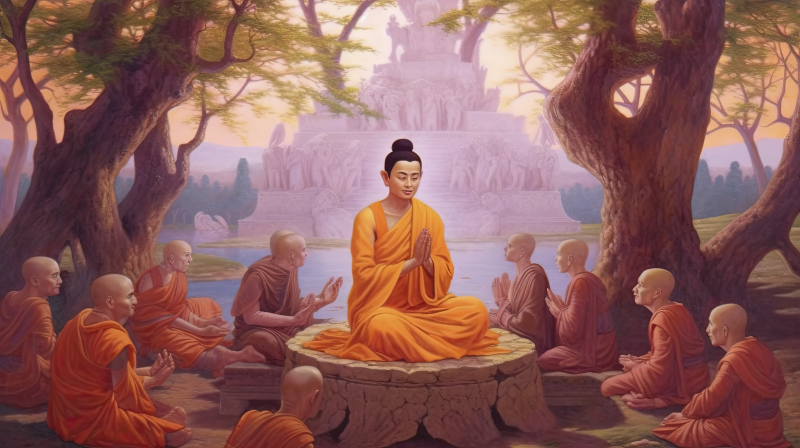
Photo on Wikimedia Commons (https://upload.wikimedia.org/wikipedia/commons/2/25/Buddha_teaching_a_Sermon_2023-05-11-2.jpg) 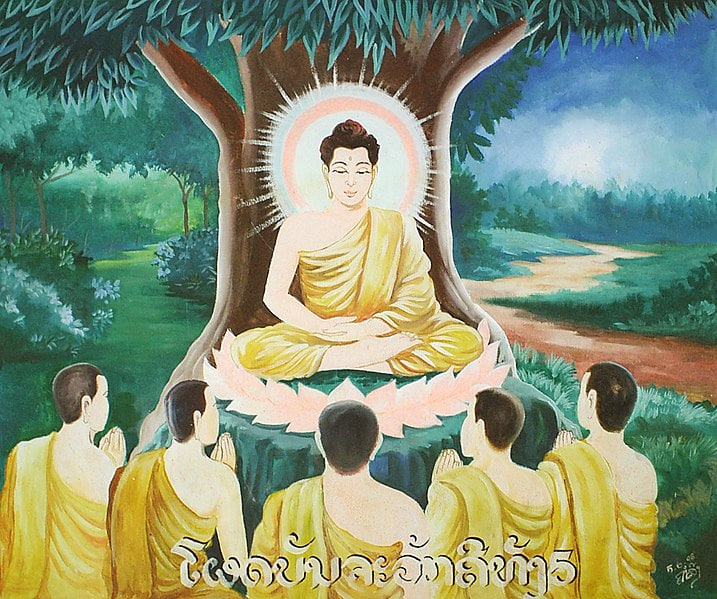
Photo on Wikimedia Commons (https://commons.wikimedia.org/wiki/File:Buddha_teaching_the_group_of_five.jpg) -
Did the Buddha have past lives?
In line with Buddhist tradition, it is held that Siddhartha Gautama, the Buddha, traversed numerous cycles of birth, death, and rebirth on his journey to enlightenment. This perpetual cycle is termed samsara. The Buddha's prior existences are vividly portrayed in Jataka tales, elucidating his diverse manifestations and showcasing virtues and teachings that intricately played a role in his ultimate realization.
The understanding of the Buddha's past lives is interwoven with the concept of karma, wherein the deeds and intentions of an individual in one existence shape their conditions and encounters in subsequent lifetimes. The Buddha is believed to amassed favorable karma and virtues across his numerous facts. These factors contributed to his ultimate birth as Siddhartha Gautama and the eventual realization of enlightenment.
Within the Pali canon, a compilation containing 547 story poems portraying his previous incarnations, each narrative serves as a didactic exploration of qualities such as selflessness, compassion, determination, and wisdom that the future Buddha honed on his quest for enlightenment. Contemplating these episodes from the Buddha's past inspires practitioners to nurture virtues, practice ethical conduct, and foster mindfulness in their present existence.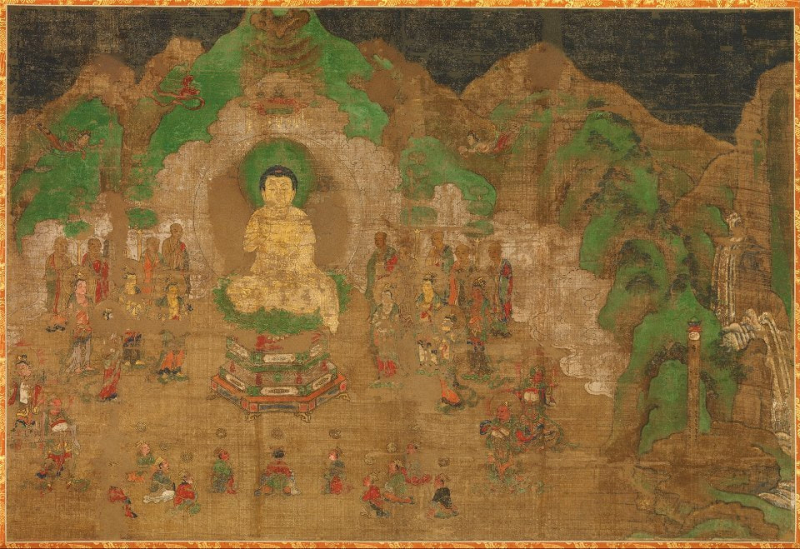
Photo on Creazilla (https://creazilla.com/nodes/6750114-anonymous-life-of-the-buddha-king-bimbisara-s-conversion-1993-478-4-metropolitan) Video by Lucas Livingston -
What happened after the Buddha died?
At age 80, following 45 years of teaching and in the presence of a substantial assembly of his followers, the Buddha entered Parinirvana. In this event, marking the culmination of his earthly existence, his physical form came to its ultimate conclusion. However, his teachings and the vibrant Buddhist community he had nurtured persisted and thrived beyond his mortal passing.
Shortly following the Buddha's Parinirvana, a council was assembled in Rajgir to safeguard his teachings and the monastic code. Guided by Mahakassapa, this council culminated in the collation and oral transmission of the Buddha's discourses and guidelines for pious conduct. This collective effort was pivotal in solidifying a harmonized rendition of the teachings.
The propagation of the Buddha's teachings extended across vast distances, spanning not only the Indian subcontinent but also reaching far-flung regions. The Sangha, the monastic order, concurrently experienced expansion, attracting a growing number of individuals who embraced the Buddha's teachings and embarked on the path of monastic life as monks and nuns. As time unfolded, diverse interpretations and distinct Buddhist schools emerged, each accentuating specific facets of the teachings uniquely.
Following the Buddha's Parinirvana, his teachings were diligently safeguarded, shared, and embraced by his followers and the following generations. The foundation of the monastic order, the dissemination of the Dharma, and the emergence of diverse Buddhist traditions collectively nurtured the lasting impact of the Buddha's teachings. This enduring legacy continues to resonate with millions around the globe.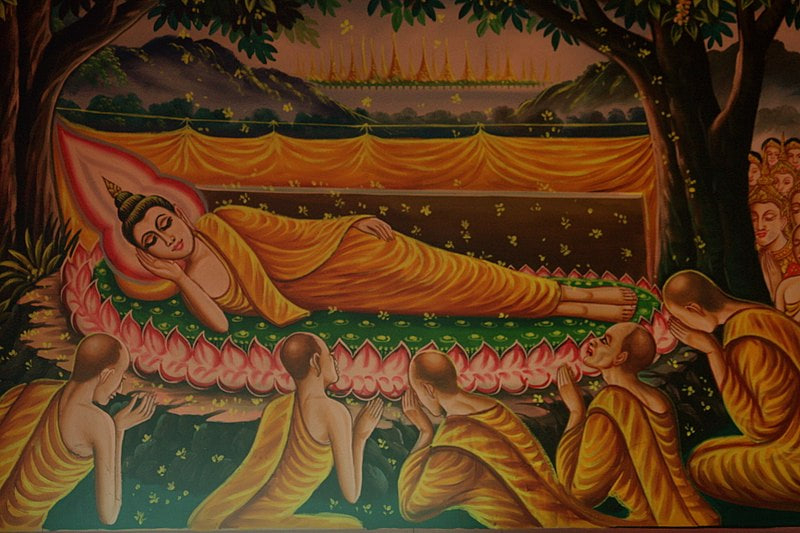
Photo on Wikimedia Commons (https://commons.wikimedia.org/wiki/File:Parinirvana_%28424432095%29.jpg) Video by Abhinav Kumar -
Are there other Buddhas?
In line with Buddhist tradition, the existence of other Buddhas is acknowledged, although Siddhartha Gautama, widely recognized as the historical Buddha, holds prominent recognition. The notion of numerous Buddhas forms an integral component of Buddhist cosmology and convictions, representing enlightened beings who have realized the same profound truths as Siddhartha Gautama.
In Buddhist thought, there are three main types of Buddhas:
- Samyaksambuddhas: These are enlightened beings who achieve awakening independently, without the need for external guidance. They rediscover the fundamental truths of the Dharma and compassionately share their insights with others, guiding them toward their enlightenment. Siddhartha Gautama exemplifies a Samyaksambuddha.
- Paccekabuddhas: Often referred to as "Solitary Realizers," these enlightened beings achieve awakening independently, yet they do not actively propagate the Dharma to others. They attain enlightenment during periods when no Samyaksambuddha is teaching profound truths.
- Bodhisattva Buddhas: These are beings who aspire to attain Buddhahood for the benefit of all sentient beings. They follow the path of a Bodhisattva, practicing compassion and accumulating merit through multiple lifetimes before finally achieving enlightenment and becoming a Samyaksambuddha.
Notably, the notion of multiple Buddhas harmonizes with cyclical time and the belief that enlightened beings emerge cyclically to lead others toward liberation. These additional Buddhas hold reverence and serve as sources of inspiration for practitioners as they embark on their paths of spiritual awakening.
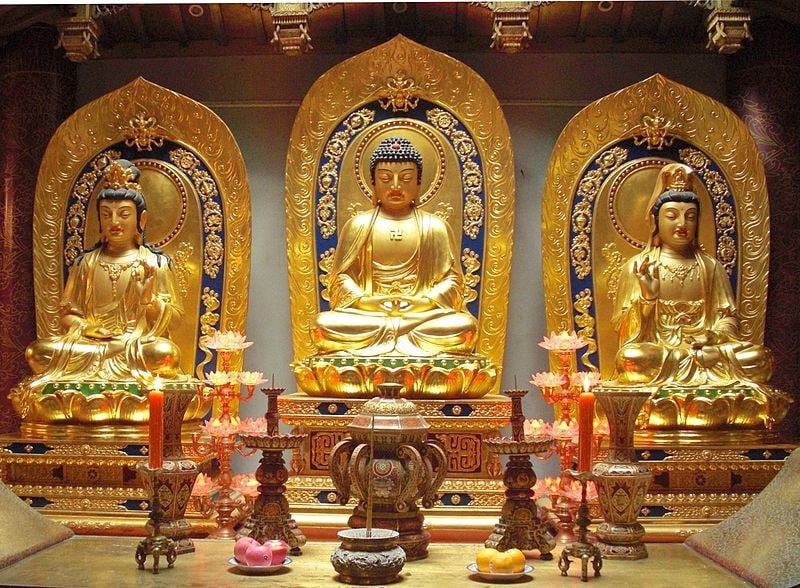
Photo on Wikimedia Commons (https://commons.wikimedia.org/wiki/File:Amitabha_Buddha_and_Bodhisattvas.jpeg) 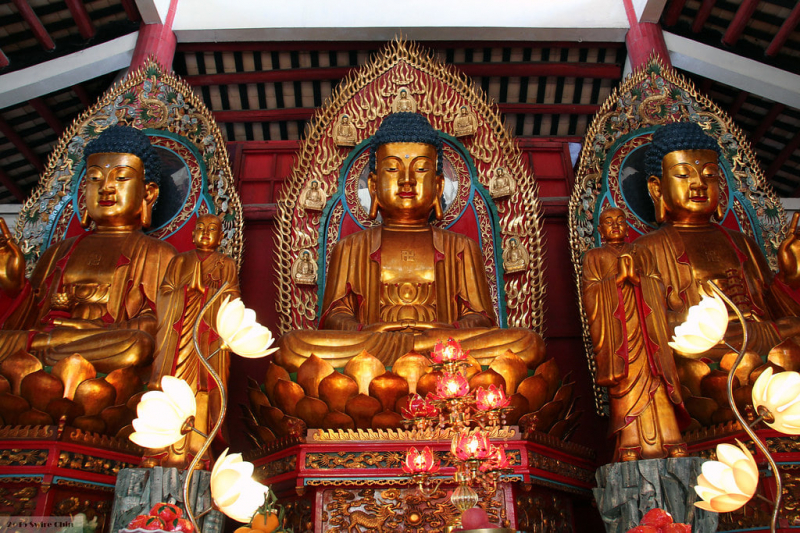
Photo on flickr (https://www.flickr.com/photos/18378305@N00/23162124270) -
Why are there so many different kinds of images of the Buddha?
The diversity of images depicting the Buddha can be attributed to several factors within Buddhist art and culture. Those known, whether carved in stone or wood, shown on paper or cloth, encompass many representations. These span from serene depictions of a meditating Buddha-eyes gently closed, lips curved into a tranquil smile-to portrayal of the emaciated Buddha-to-be engaged in austerities.
Initially, Buddhism extended its reach to diverse regions throughout Asia, each nurturing its distinct artistic traditions and interpretations. Consequently, various Buddha images emerged due to the infusion of local aesthetics, beliefs, and cultural influences.
The Buddha's teachings underscore the significance of accommodating diverse audiences and contextual nuances. This adaptability has resulted in artistic depictions harmonizing with various communities' cultural sensitivities and preferences.
Moreover, the Buddha's transcendence of mundane matters provides room for imaginative interpretations of his physical representation. Artists have ventured into diverse artistic styles, symbolisms, and iconography to capture the core of the Buddha's enlightenment and teachings.
The abundance of Buddha images is a vivid testament to the cultural richness, artistic diversity, and various interpretations Buddhism encountered during its expansion into distinct regions. This array is a testament to the timeless adaptability and universal essence of the Buddha's teachings.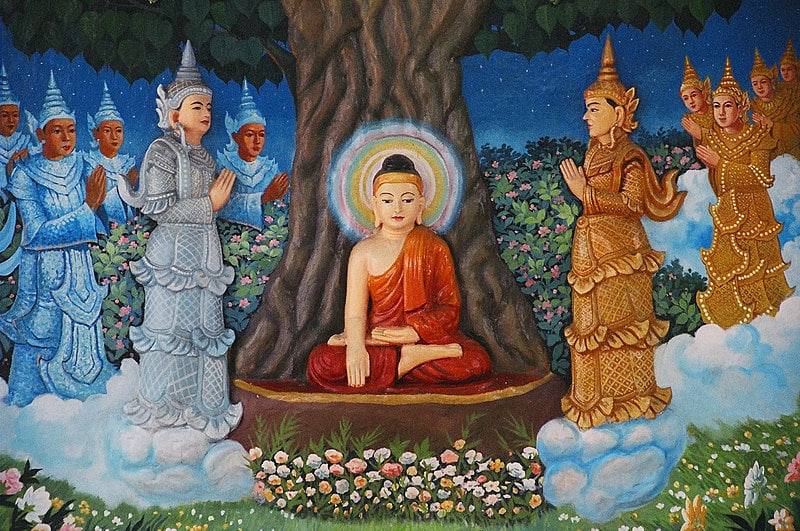
Photo on Wikimedia Commons (https://commons.wikimedia.org/wiki/File:The_Buddha%C2%B4s_Enlightenment_%28Burmese_depiction%29_%2830284239436%29.jpg) Video by MorningStar Show -
What did the Buddha look like?
The precise physical appearance of Buddha remains elusive in historical records and contemporary accounts. In the present day, researchers endeavor to unravel ancient DNA to gain deeper insights into early migrations and the inhabitants of the regions encompassing modern-day southern Nepal and northeastern India, where the Buddha is thought to have resided. Despite these efforts, a definitive portrayal of the individuals in the Buddha's era remains absent.
Nevertheless, throughout the centuries, many artistic representations and descriptions have surfaced within Buddhist art and literature. The Buddha frequently appears as a tranquil and austere figure, adorned with distinctive attributes that have gained iconic status in Buddhist iconography. Among the recurring traits associated with depictions of the Buddha are a shaven head, elongated earlobes, an ushnisha (a cranial protuberance or crown), an urna (a dot positioned between the eyebrows), and the drapery of monastic robes.
It is significant to recognize that these portrayals have evolved and can exhibit variations amidst diverse cultures and artistic customs within the realm of Buddhism. The historical precision of these representations remains constrained, given their susceptibility to the impact of cultural interpretations and artistic norms.
Although unequivocal historical documentation of the Buddha's physical attributes is absent, the artistic renderings and narratives that surfaced throughout epochs offer a symbolic illustration of his enlightened and ascetic essence.
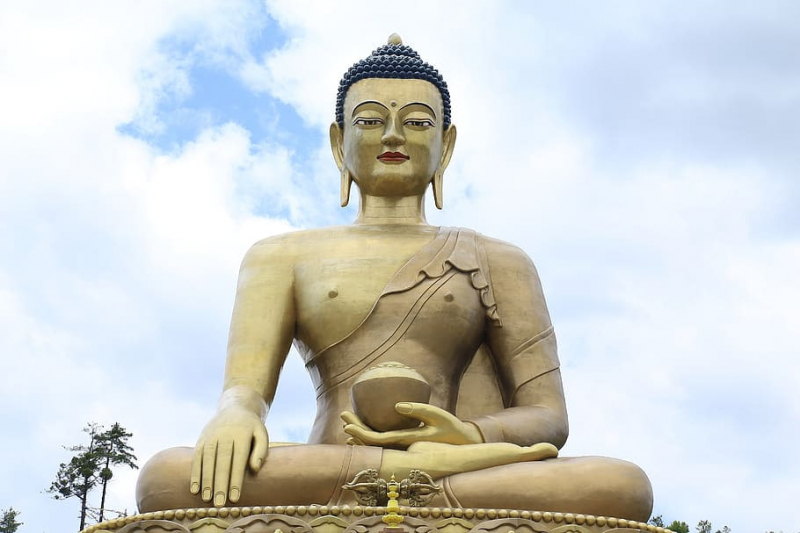
Photo on pxfuel (https://www.pxfuel.com/en/search?q=male+statue&page=9) Video by Kesava































